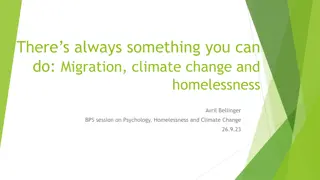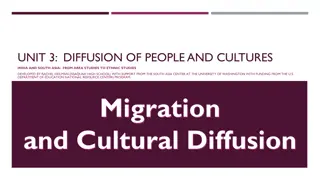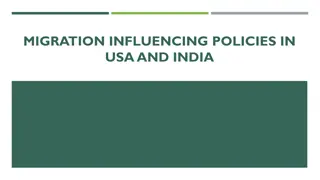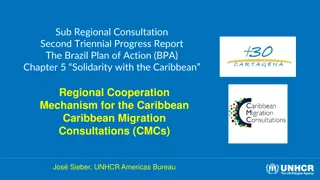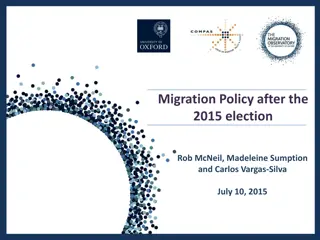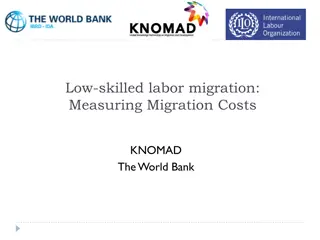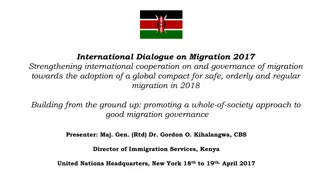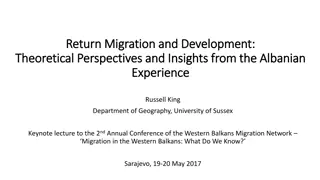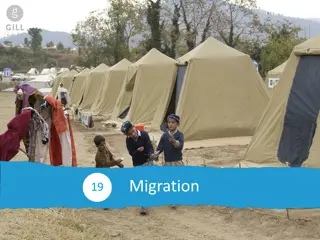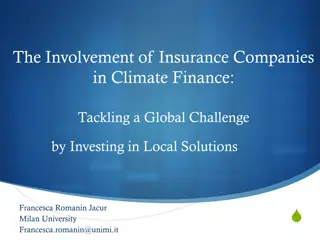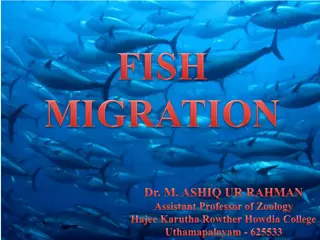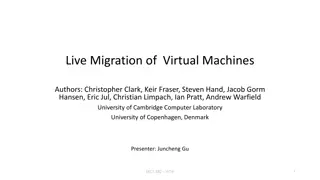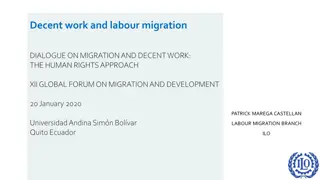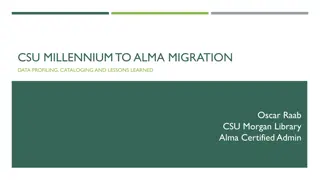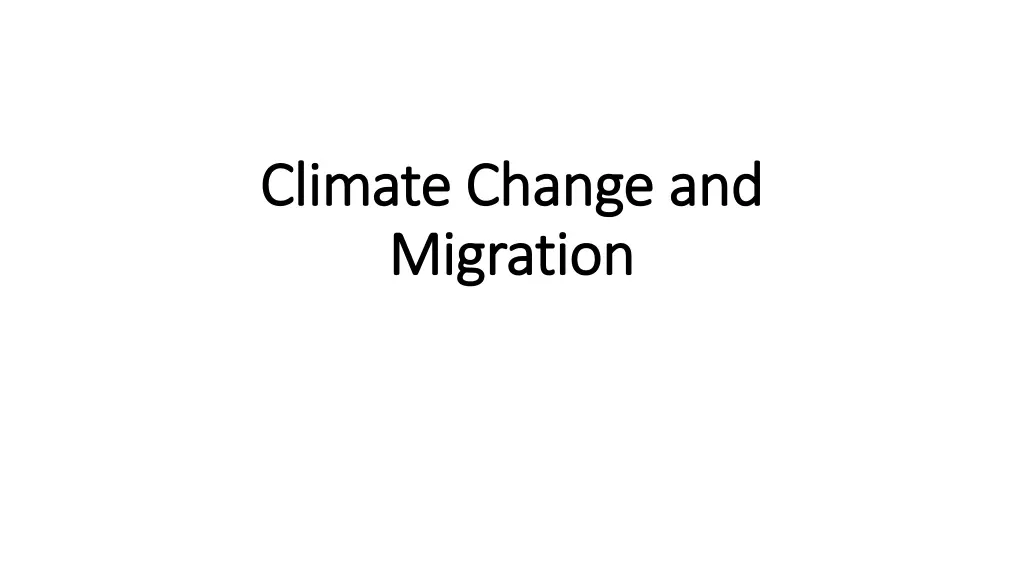
Impact of Climate Change on Human Migration
Learn about how climate change is causing human migration with rising temperatures, changing rainfall patterns, and decreased agriculture production, leading to disruptions in livelihoods and forcing people to move from their habitats. The carrying capacity of ecosystems is also being affected, resulting in forced migration due to climate change impacts. Prof. N. Myers estimates that by 2050, 200 million migrants will be displaced, with some becoming climate refugees seeking places free from climate change effects.
Download Presentation

Please find below an Image/Link to download the presentation.
The content on the website is provided AS IS for your information and personal use only. It may not be sold, licensed, or shared on other websites without obtaining consent from the author. If you encounter any issues during the download, it is possible that the publisher has removed the file from their server.
You are allowed to download the files provided on this website for personal or commercial use, subject to the condition that they are used lawfully. All files are the property of their respective owners.
The content on the website is provided AS IS for your information and personal use only. It may not be sold, licensed, or shared on other websites without obtaining consent from the author.
E N D
Presentation Transcript
Climate Change and Climate Change and Migration Migration
Climate Change and Migration Climate Change and Migration The impacts of climate change that lead to human migration: - Rise of temperature beyond 2 degree Celsius will lead to some areas being under constant drought (dry conditions) expected to increase from 2% to 10% in 2050 - Rainfall patterns will change and some areas will have more (South Asia) and some areas (Sub-Saharan Africa) will have very less rainfall - Agriculture production in rainfed areas will fall by 30-50% by the middle of the 21stcentury - Reduction in crop yields and fish will lead to disruption of livelihoods
Climate Change and Migration Climate Change and Migration Carrying capacity of large parts of the world the ability of different ecosystems to provide food, water and shelter to its population will be severely affected by climate change People are forced to move migrate
Climate Change and Migration Climate Change and Migration Climate Drivers that lead to climate change (2 types) 1) Climate Processes slow changes like sea level rise, salinization of agricultural land, desertification, water scarcity and food insecurity 2) Climate Events sudden floods, cyclones, hurricanes and typhoons Migration: movement of human population out of their habitats Forced Migration: People are forced to move out of their habitats due to climate change due to shoreline erosion, coastal flooding and agriculture disruption. Also known as distress migration.
Climate Change and Migration Climate Change and Migration Prof. N. Myers (Oxford University) estimates that there would be 200 million migrants by 2050 which means that 1 in every 45 persons would have been displaced from their habitat due to climate change. People who have been forced to leave their habitats due to climate change impacts are known as climate refugees Climate refugees are those who seek refuge in places where they can live and make a livelihood without the impact of climate change
Climate Change and Migration Climate Change and Migration The impact of climate change on future forced migration will depend on the following: 1) The quantity of future greenhouse gas emissions 2) The rate of future population growth and their distribution 3) Government policies especially in prediction of climate events and interventions 4) The effectiveness of local and national adaptation strategies


